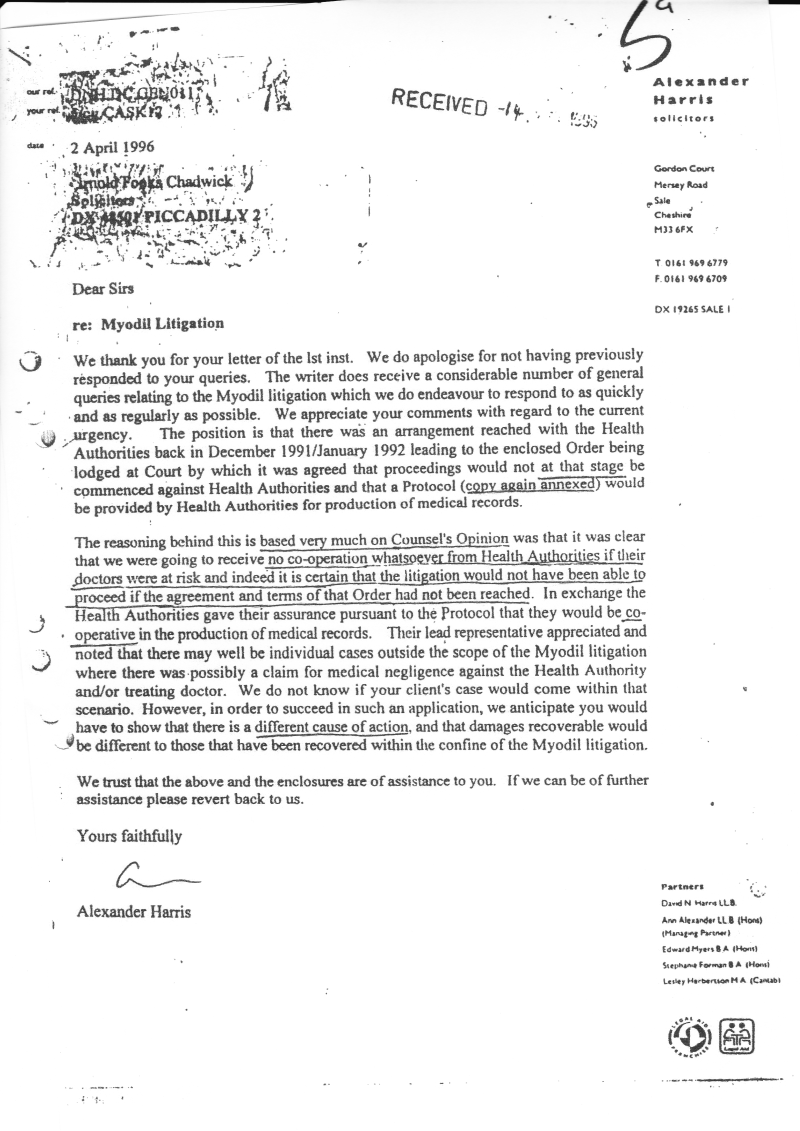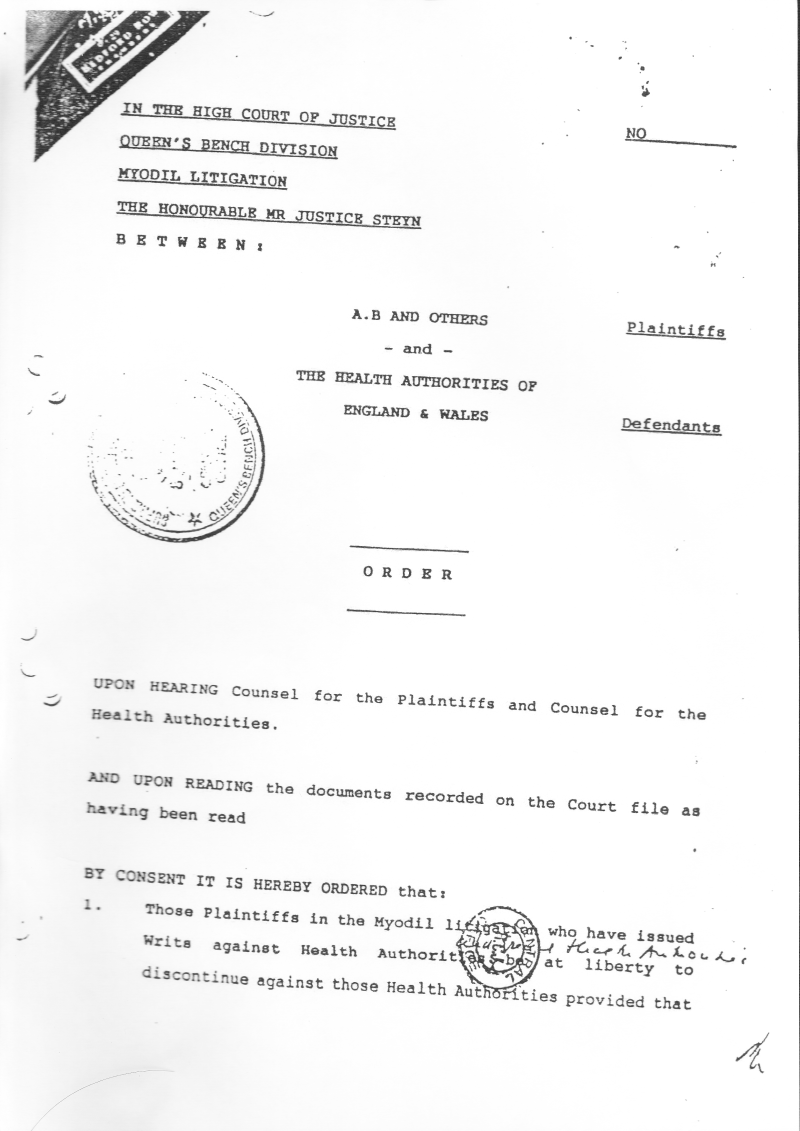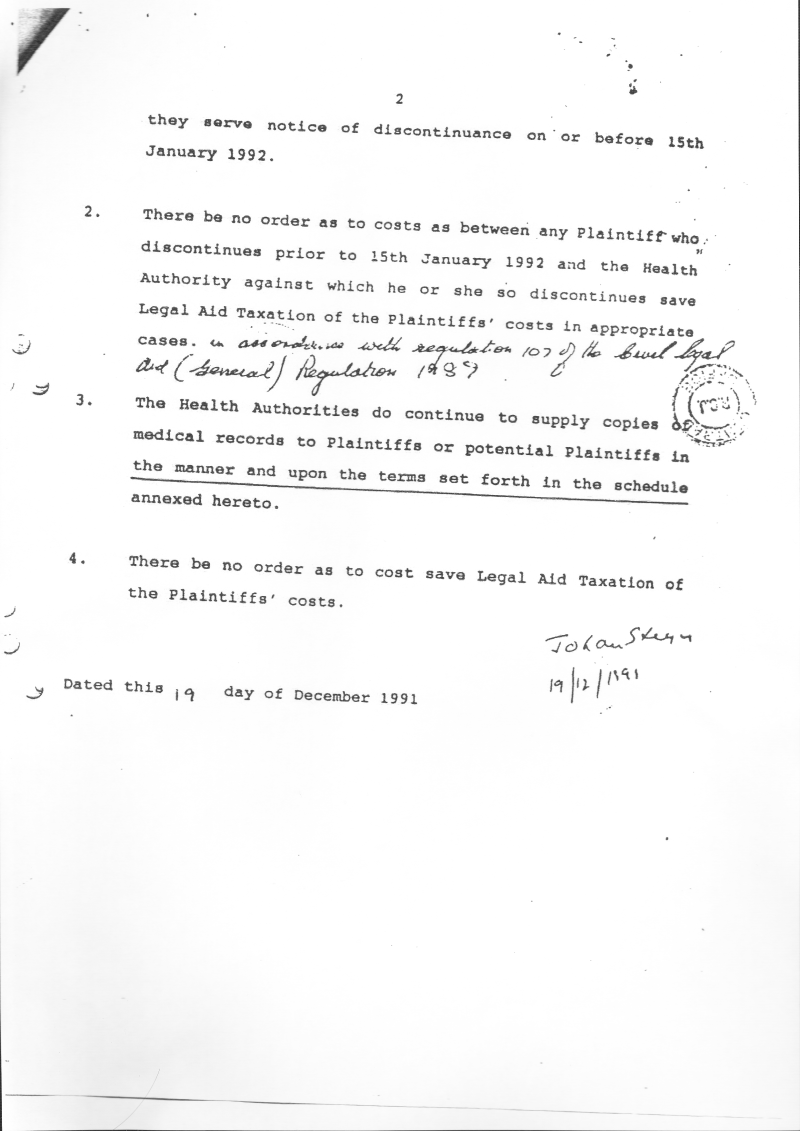







EXTRACT FROM COURT TRANSCRIPTS'
been withdrawn by 1st January 1978. The latest datefor withdrawal of Myodil is 1st January 1980 following the Leeds symposium at the end of 1979.
53. We reject the Ishierwood scenario of a "cottage hospital radiologist" finding it so difficult to switch to Metrizamide. In part, that scenario appears to be based on financial considerations i.e. that Myodil was considerably cheaper than Metrizamide. Those financial considerations are not supported by the evidence. Sales of Myodil fell dramatically between 1978 and 1980 – see Appendix I of the re-amended Defence.
Effective Dates of Negligence
54. In establishing negligence it is crucial to determine the dates which it is more likely than not that the Plaintiffs will succeed on their case.
55. In our view the first effective year of alleging negligence is probably 1971 because:
55.1 the Medicines Act 1968 procedures were being firmly established and GLL was to apply for a Product Licence of Right;
55.2 by 1968 the ABPI Committee on drug testing had refined its original 1964 Standards;
55.3 GLL’s assessed the toxicity of Myodil in 1971 as being "surrounded in mystery" (GLL document 994);
55.4 GLL had sent Keen to South Africa to investigate the clear case of s.a. in 1971;
55.5 Myodil was made a service product from February 1971;
55.6 The product literature in August 1971 referred to Arachnoiditis for the first time;
55.7 The spate of ADRs which occurred during 1970 and 1971;
55.8 In October 1971, GLL reviewed the product and all its problems in a series of meetings and failed to take action;
55.9 The foregoing, when combined with Thalidomide, the Dunlop Committee, the CRM andCSM changes, necessitated a complete review of Myodil in 1971, including the past literature, not only Davies on the risk of arachnoiditis but, all the literature on aspiration.
56. Further we advise that before 1960 our expert evidence indicates little basis for alleging negligence. Further, although Asscher supports alleging negligence prior to 1960 and relies on Davies (1956), few of the above factors apply between 1960 and 1971.
57. We therefore conclude that:
57.1 for pre-1960 cases the main basis for a claim in negligence is Asscher’s evidence and the Davies paper. Therefore we are forced to conclude that the claims in this period are extremely weak;
57.2 for the decade 1960 to 1970 inclusive, few of the para 74 factors apply and in our view a case on negligence during this period must be regarded as stronger than that prior to 1960 but still as being weak;
57.3 from 1971 to 1977 inclusive the claimants have a reasonable prospect of establishing that GLL was negligent;
57.4 from 1978 to 1980 (see para 68 ff)the Plaintiffs have good prospects of establishing negligence.
Causation
58. The Plaintiffs’ case is:
58.1 as to prevalence:
The frequency of Myodil induced s.a. was significant and about 5% and would have been found to have been so on reasonable enquiry by the beginning of the 1970s;
58.2 as to indications for use:
GLL, if it had not been negligent, would have issued such warnings to the medical